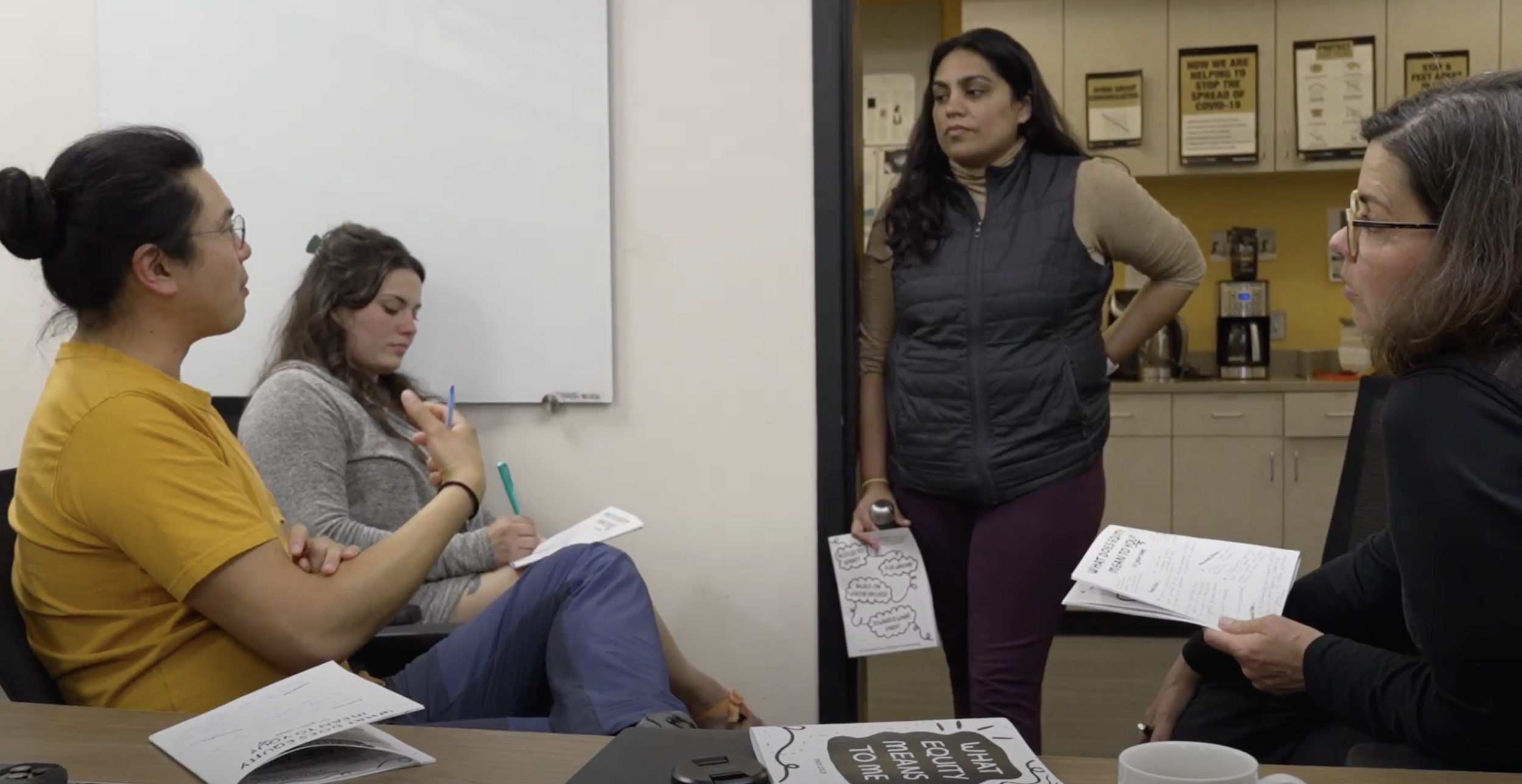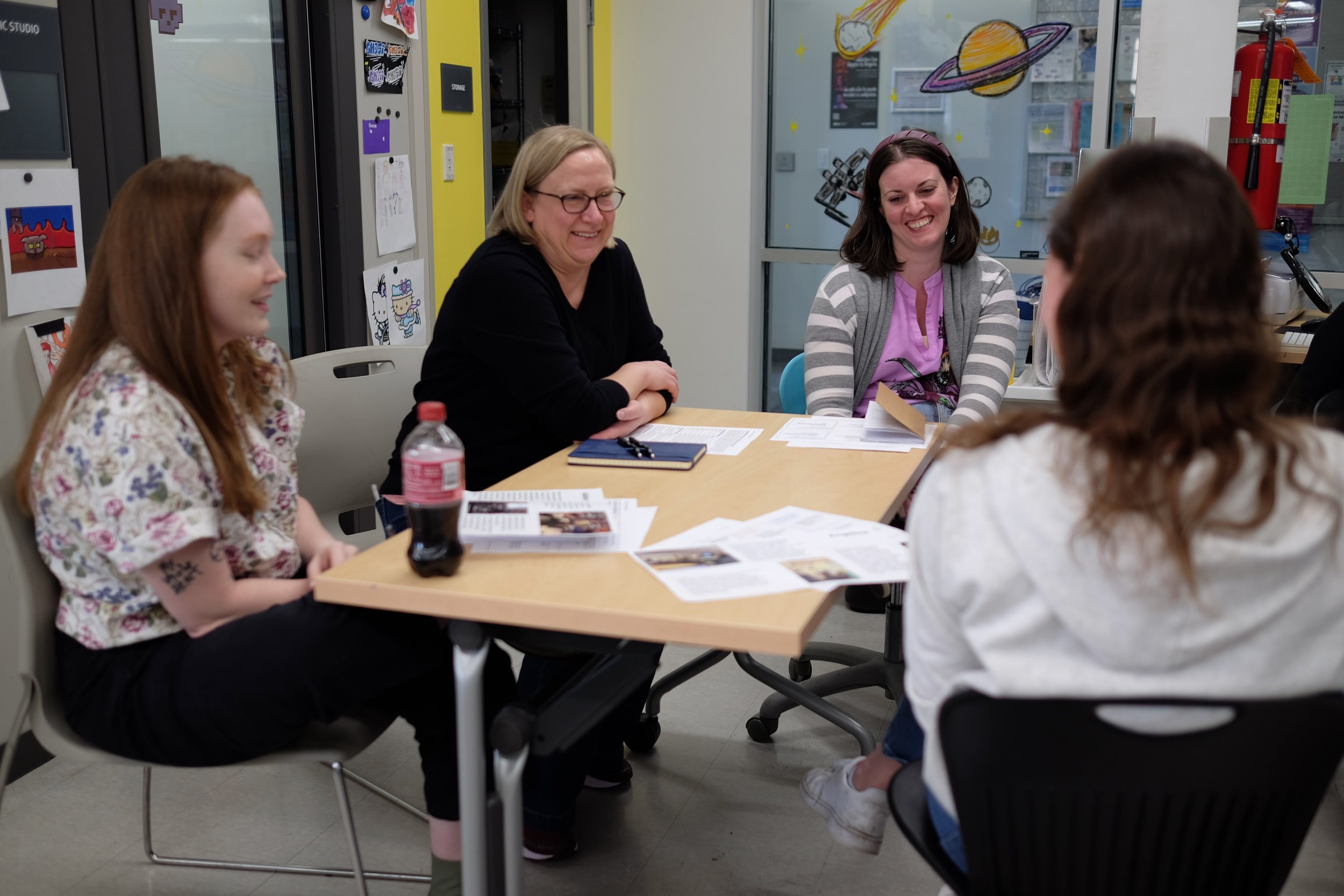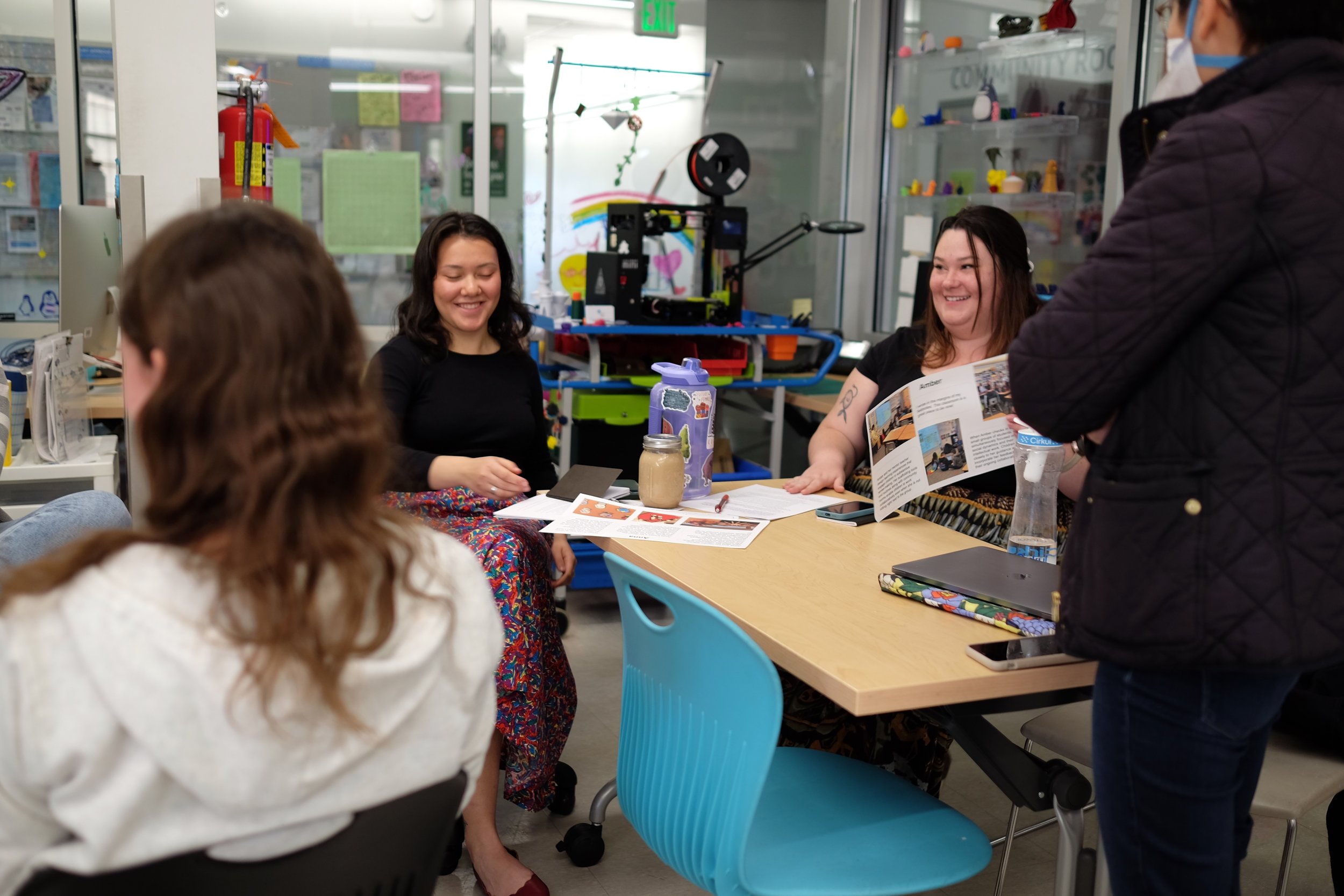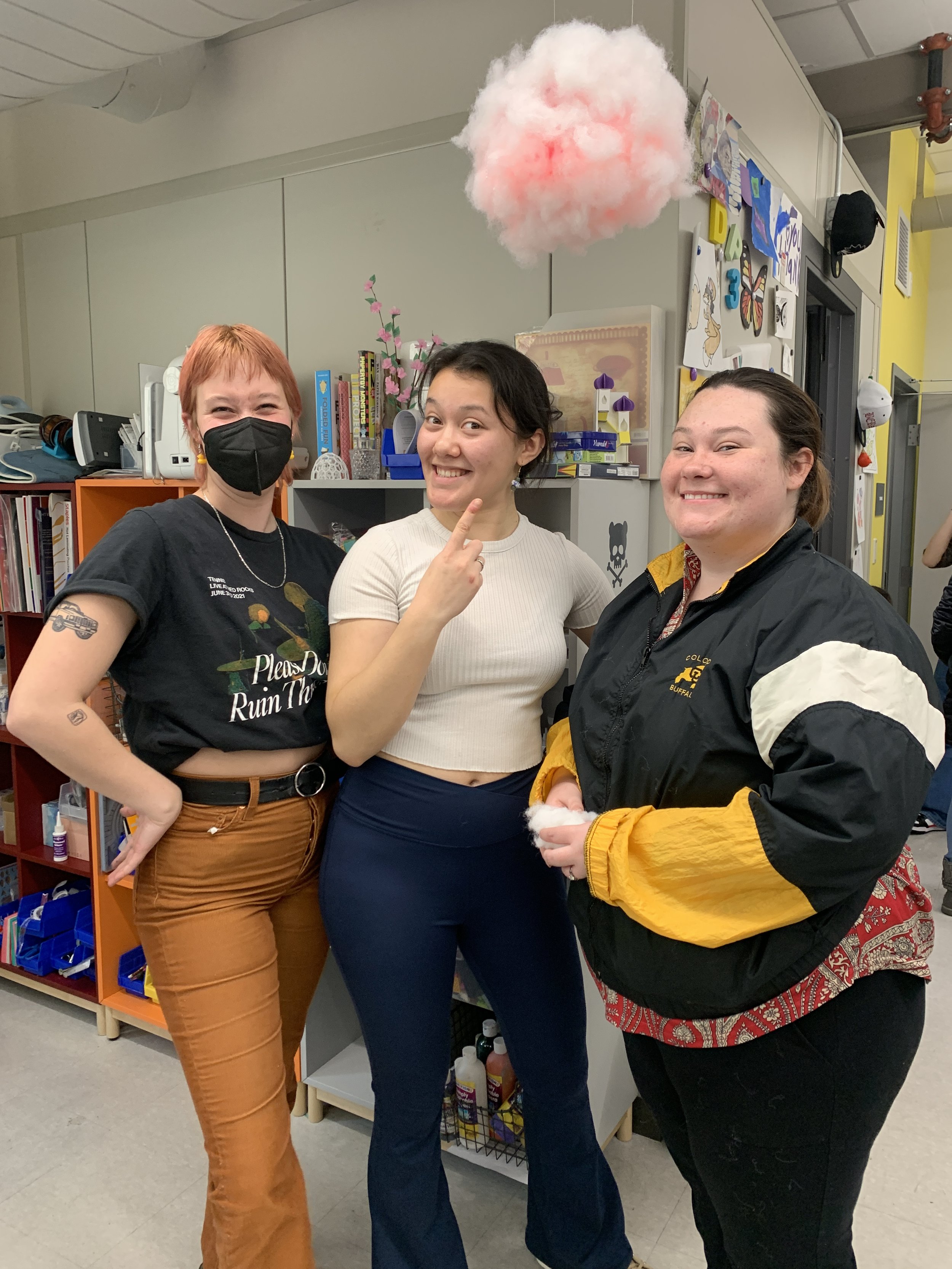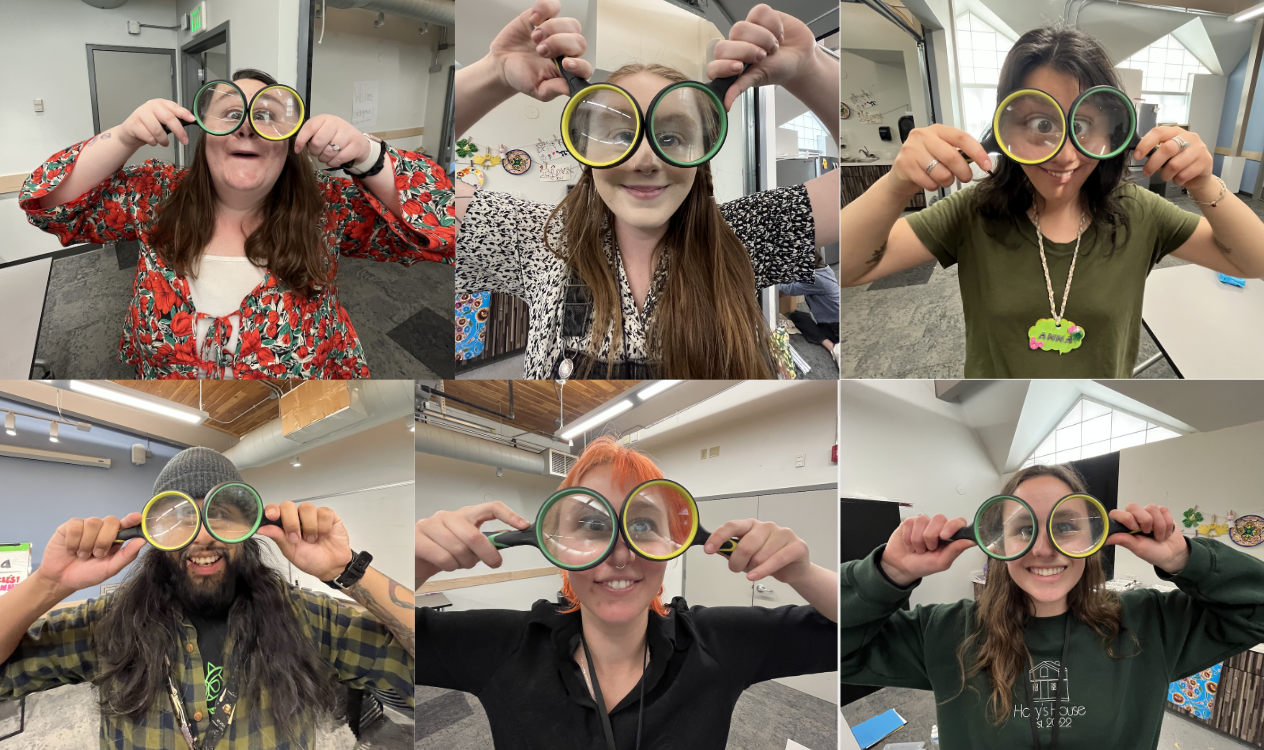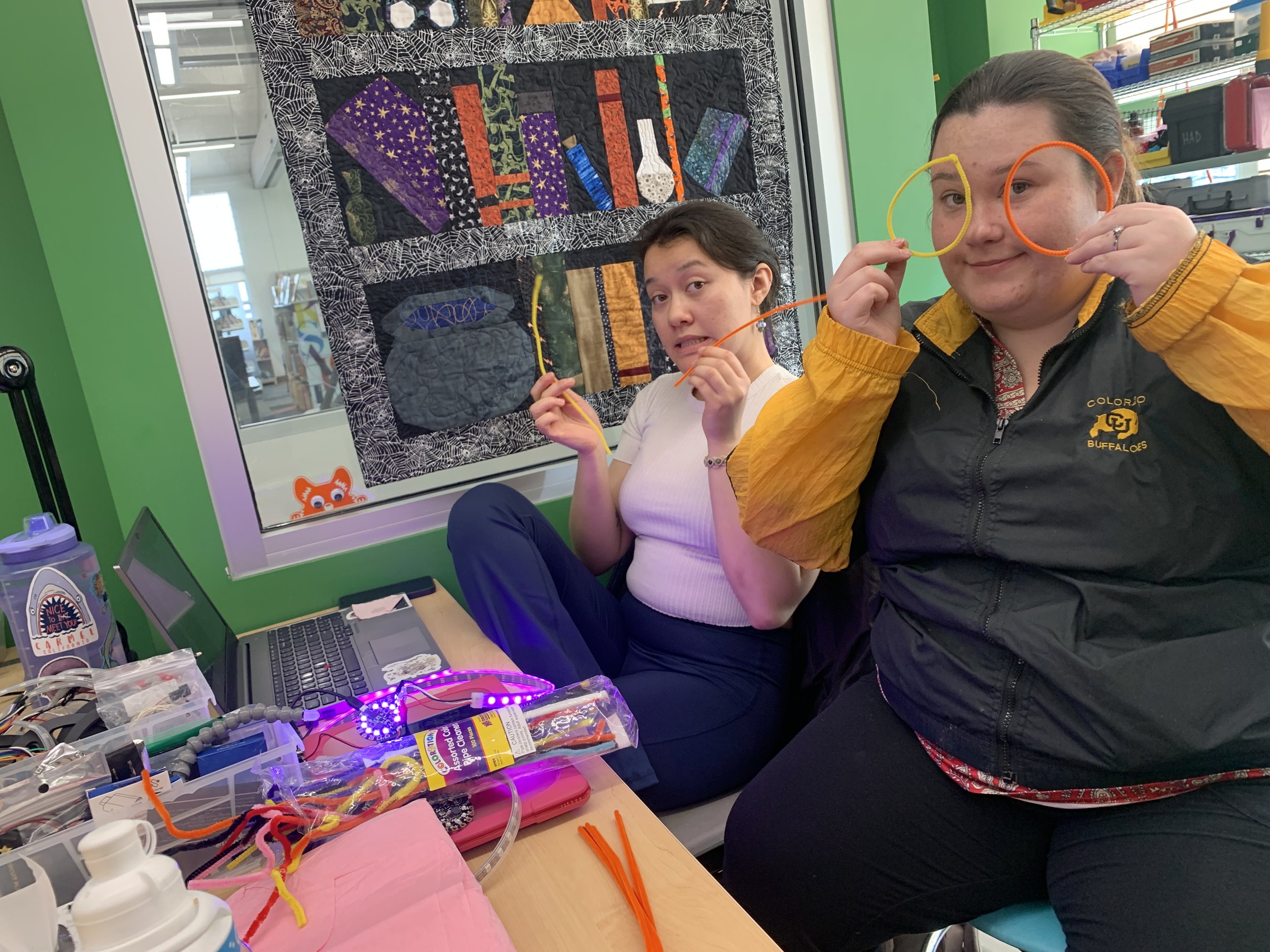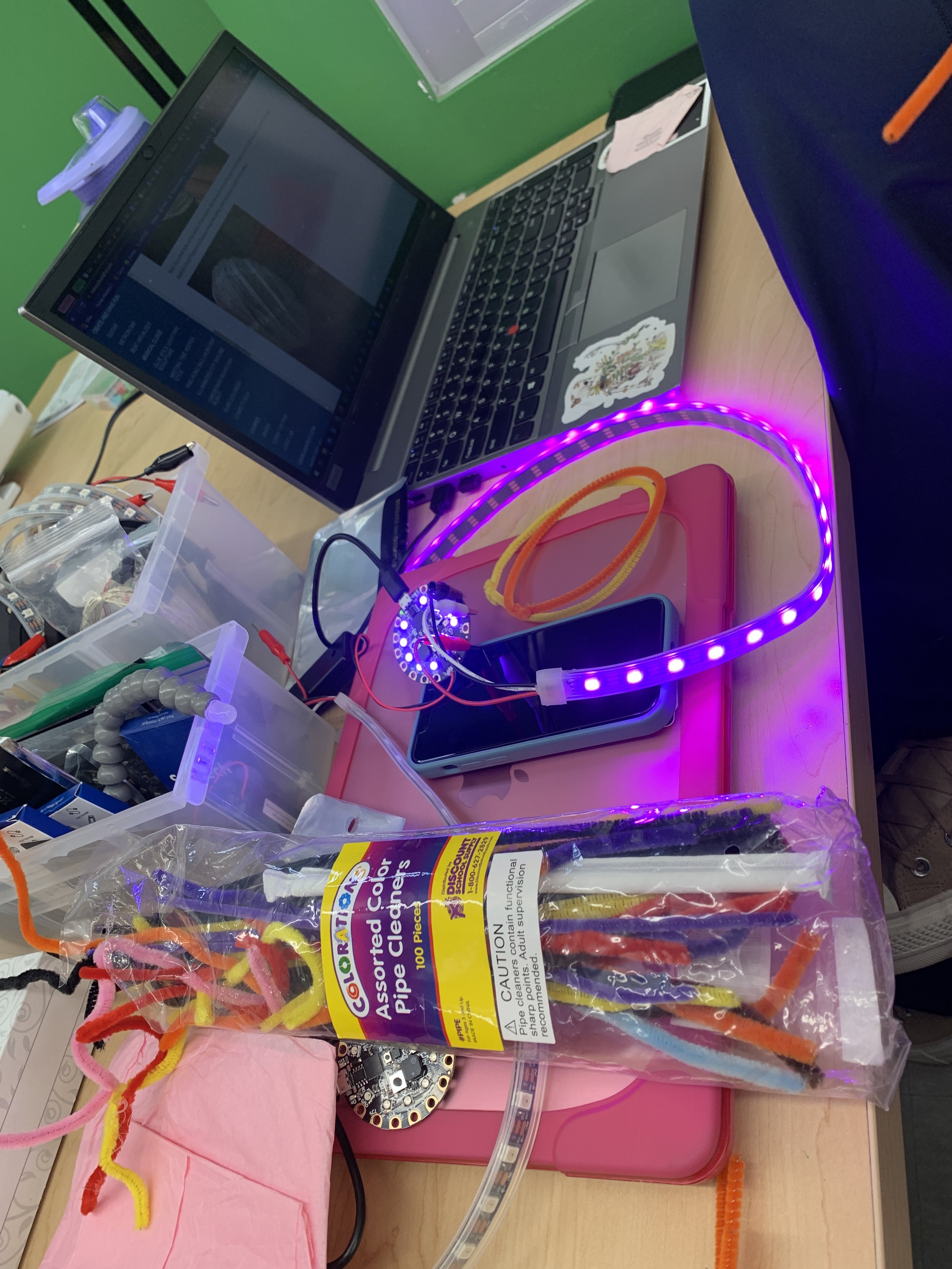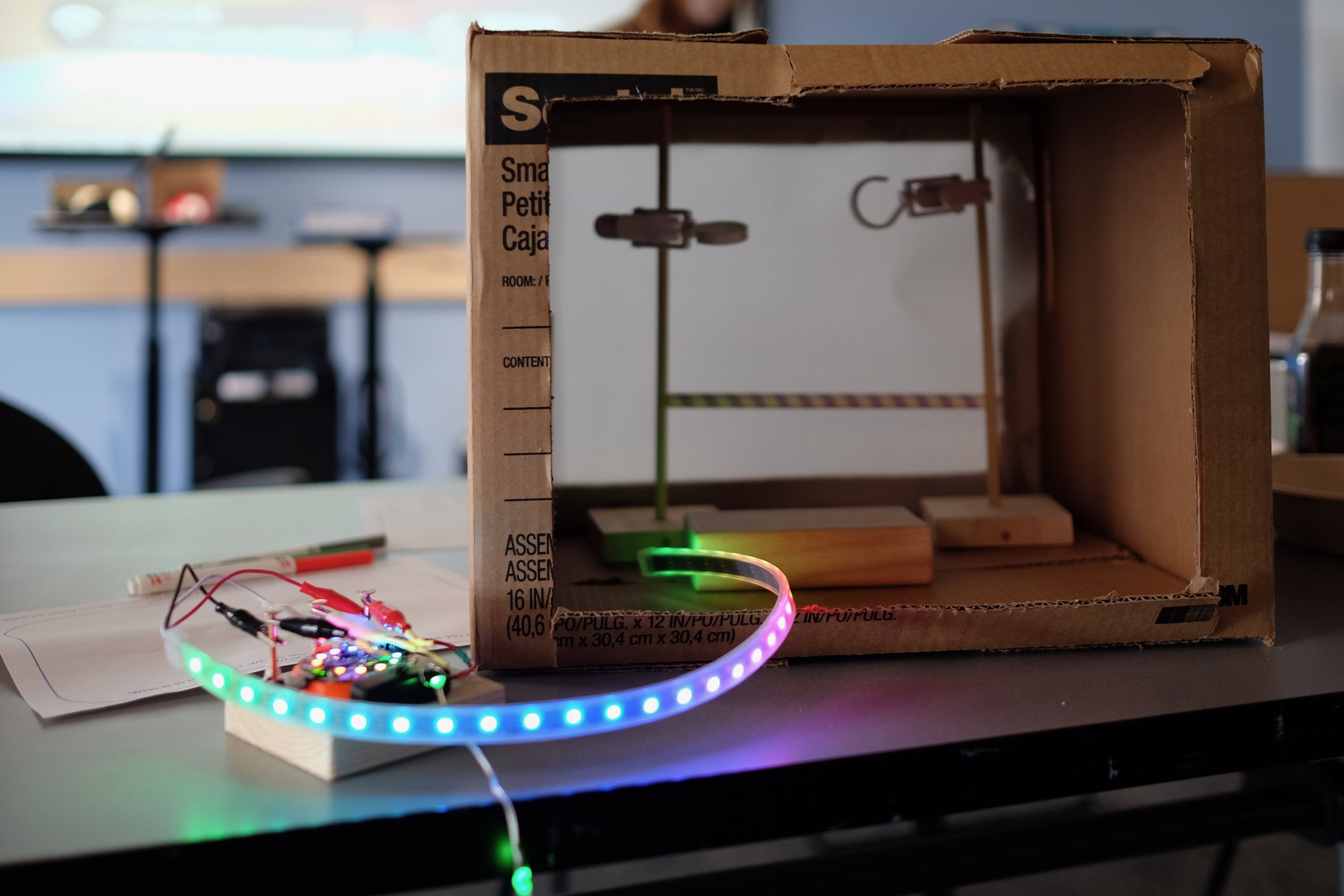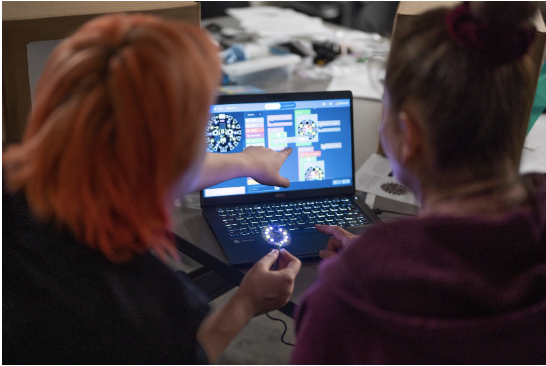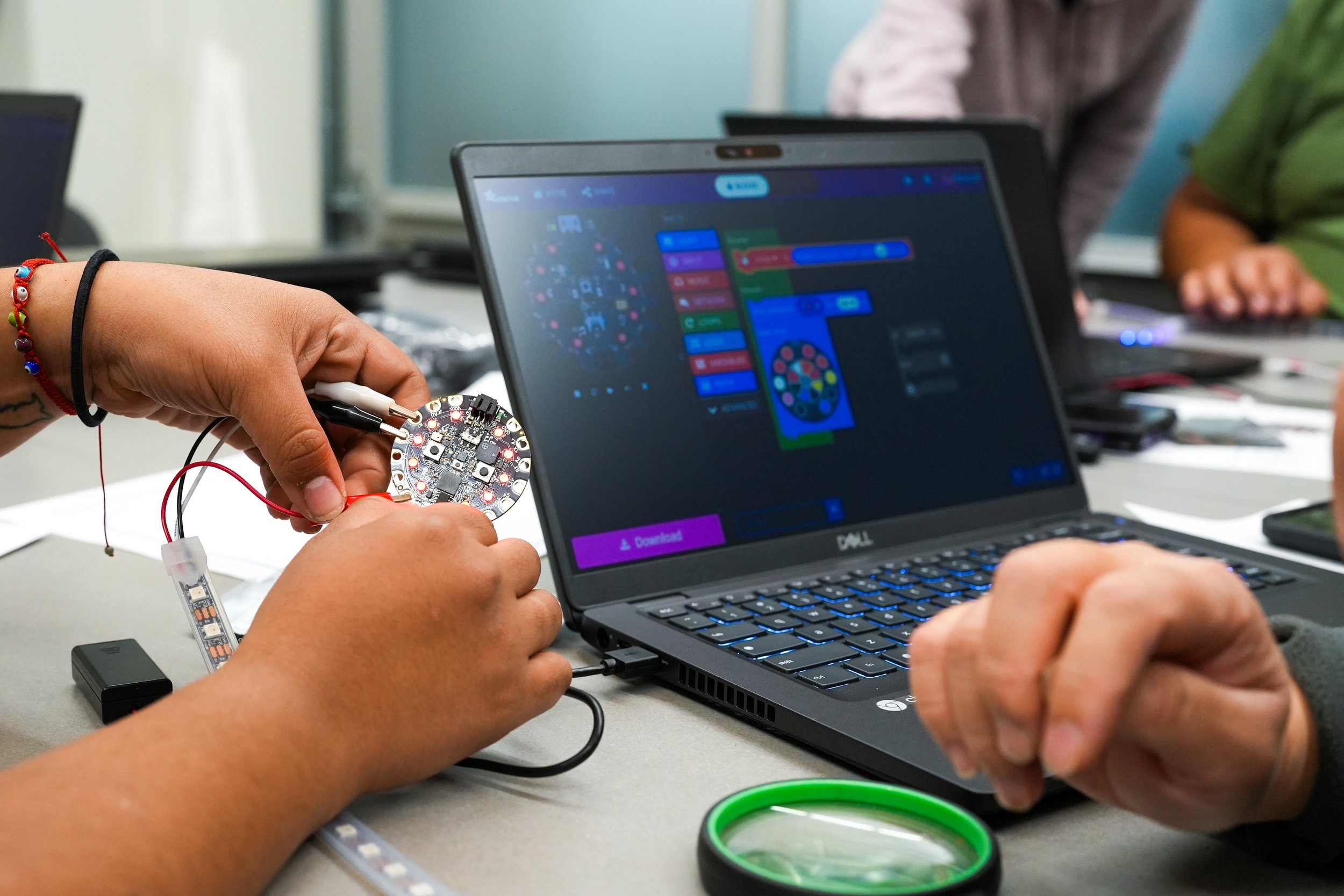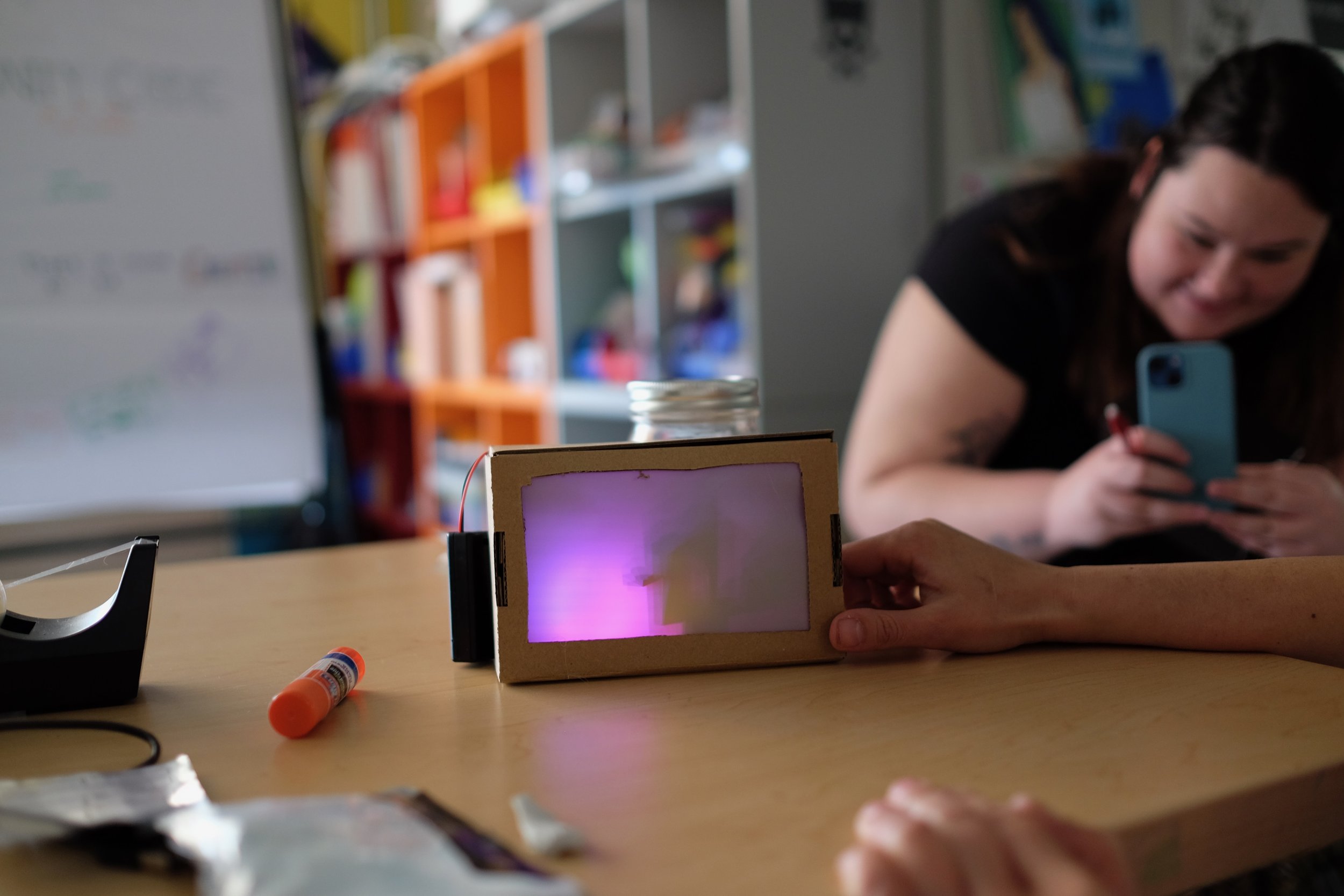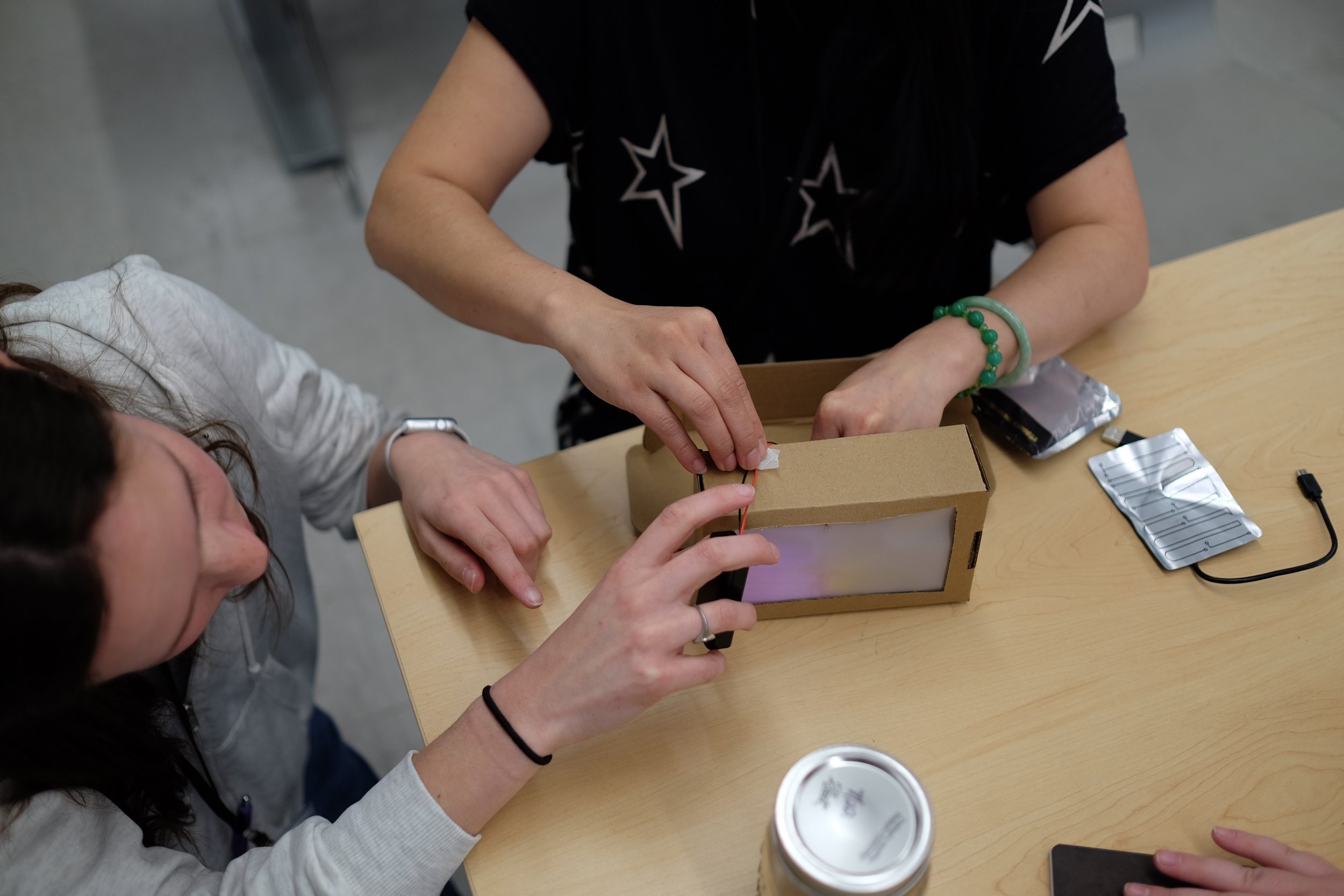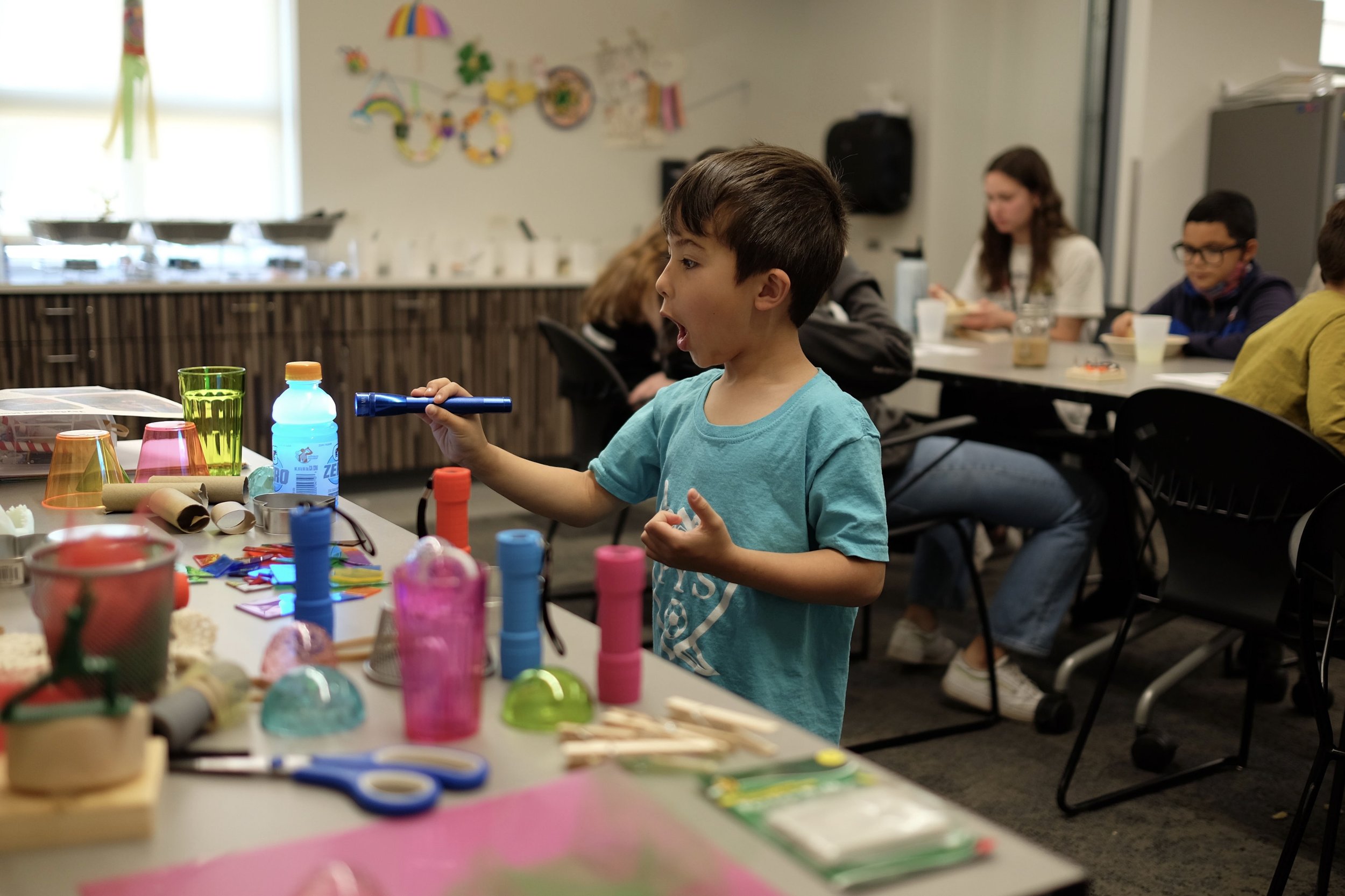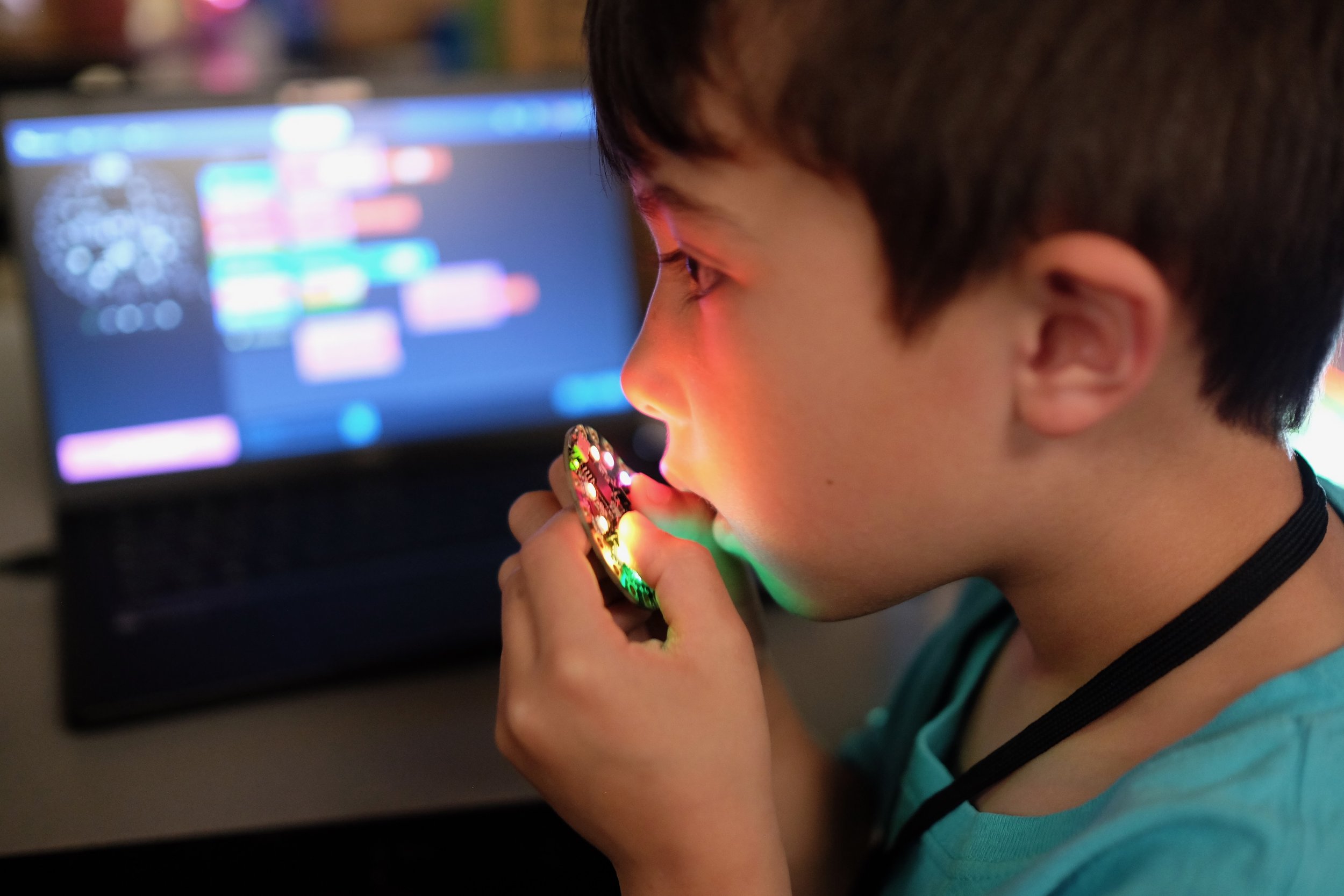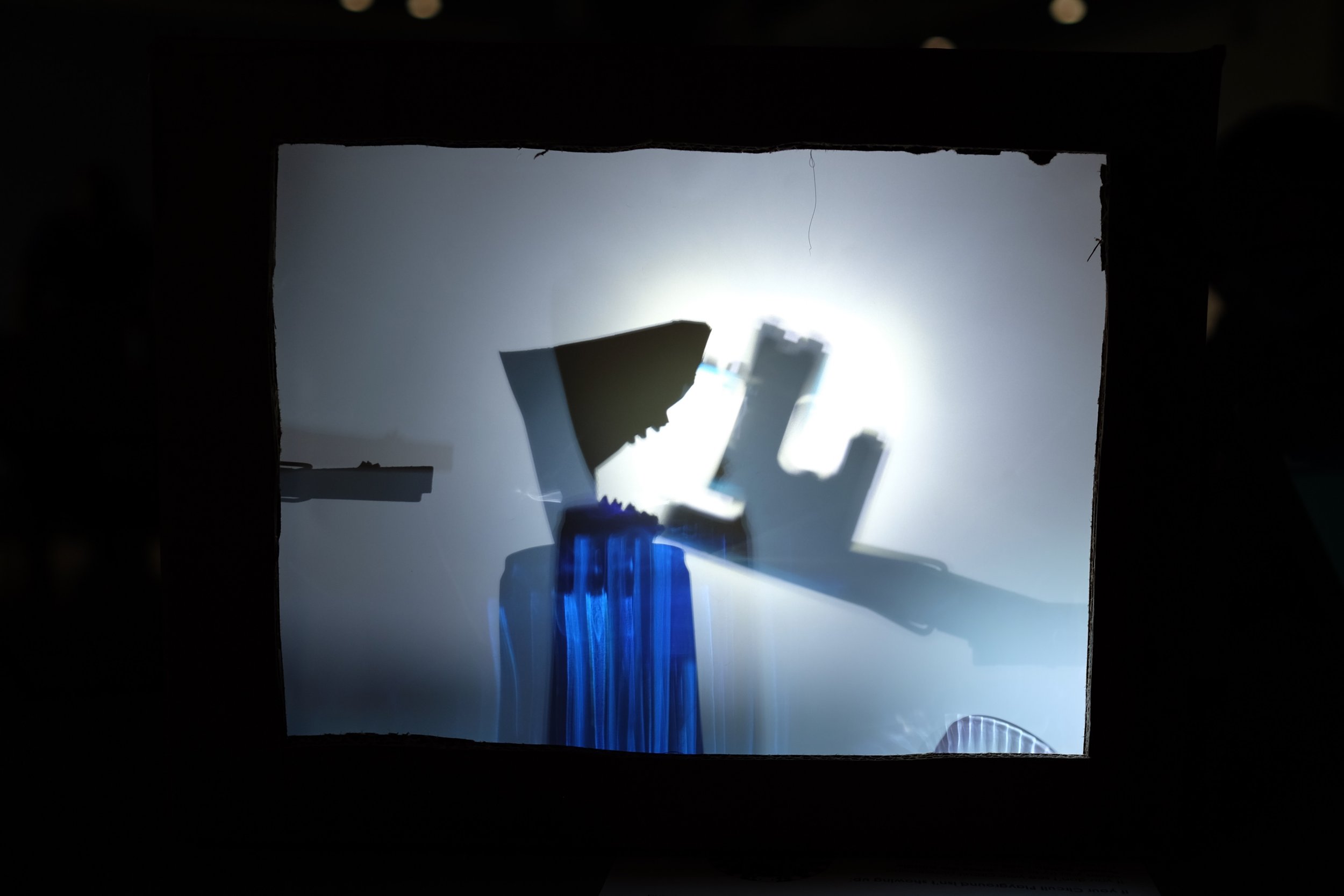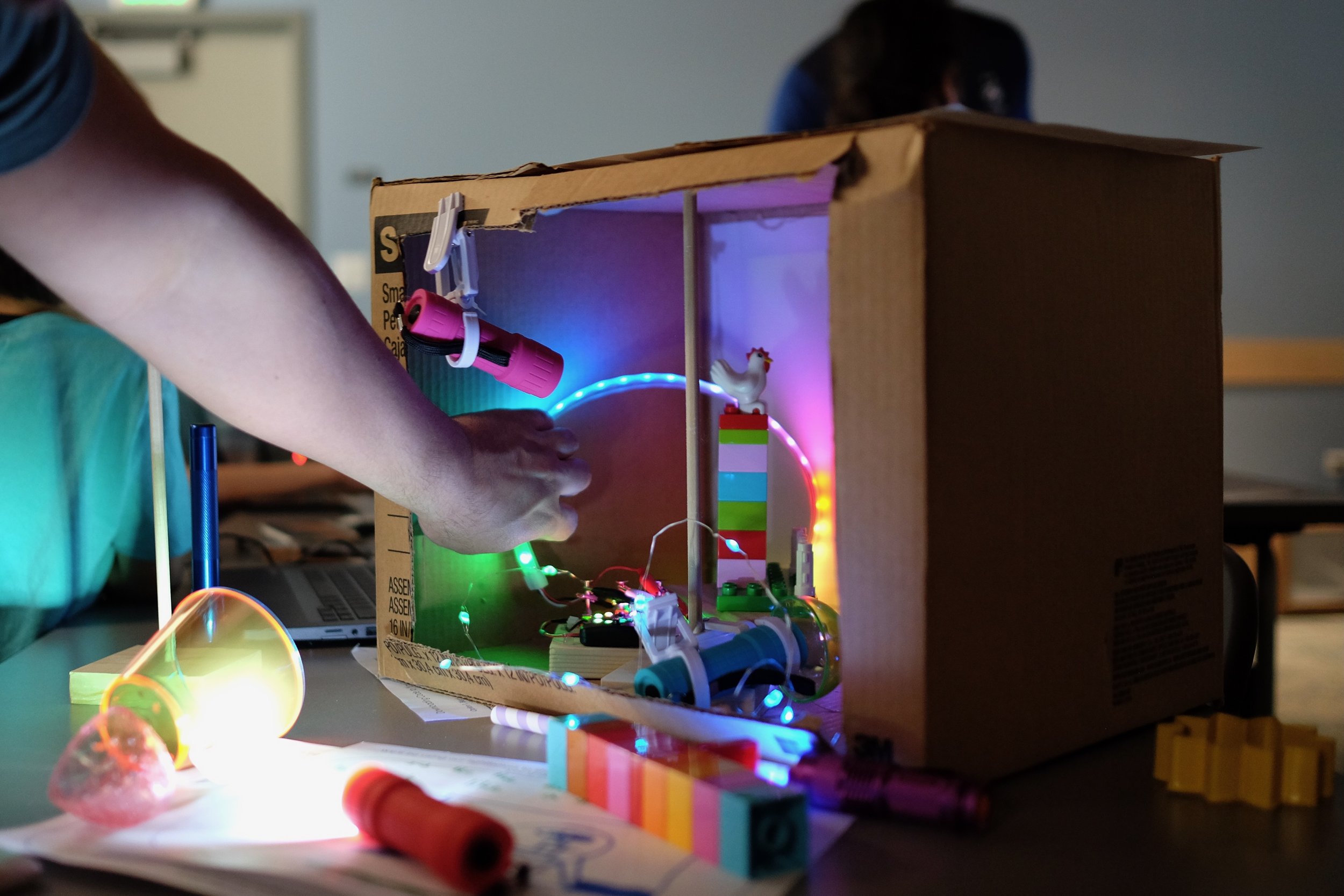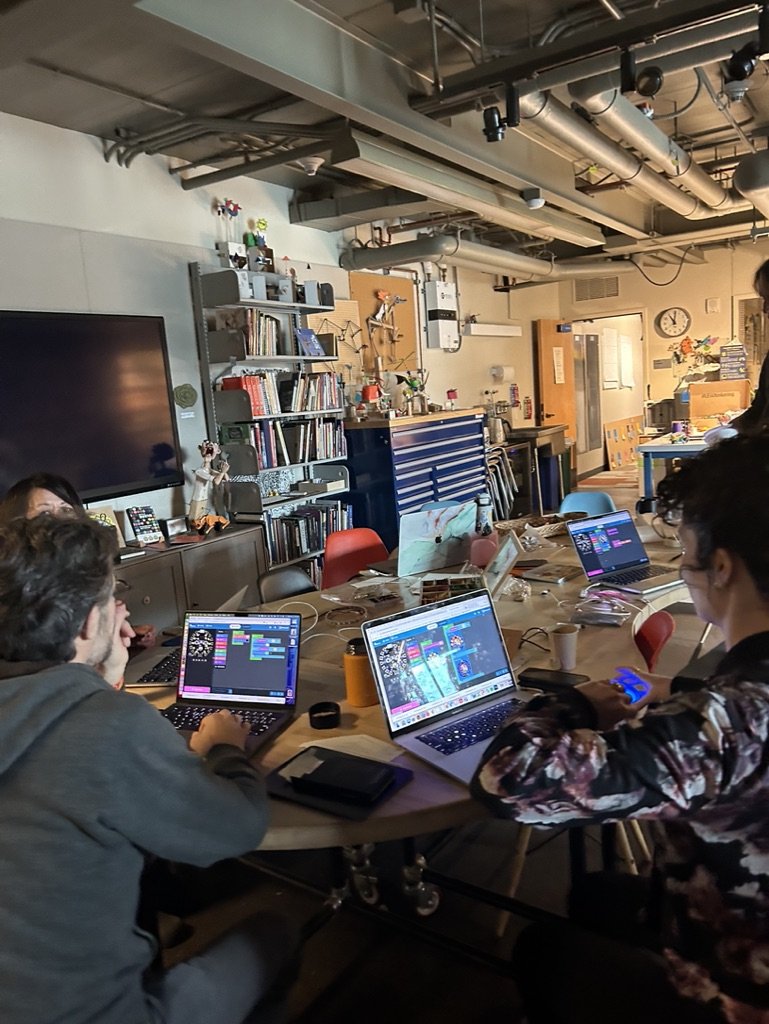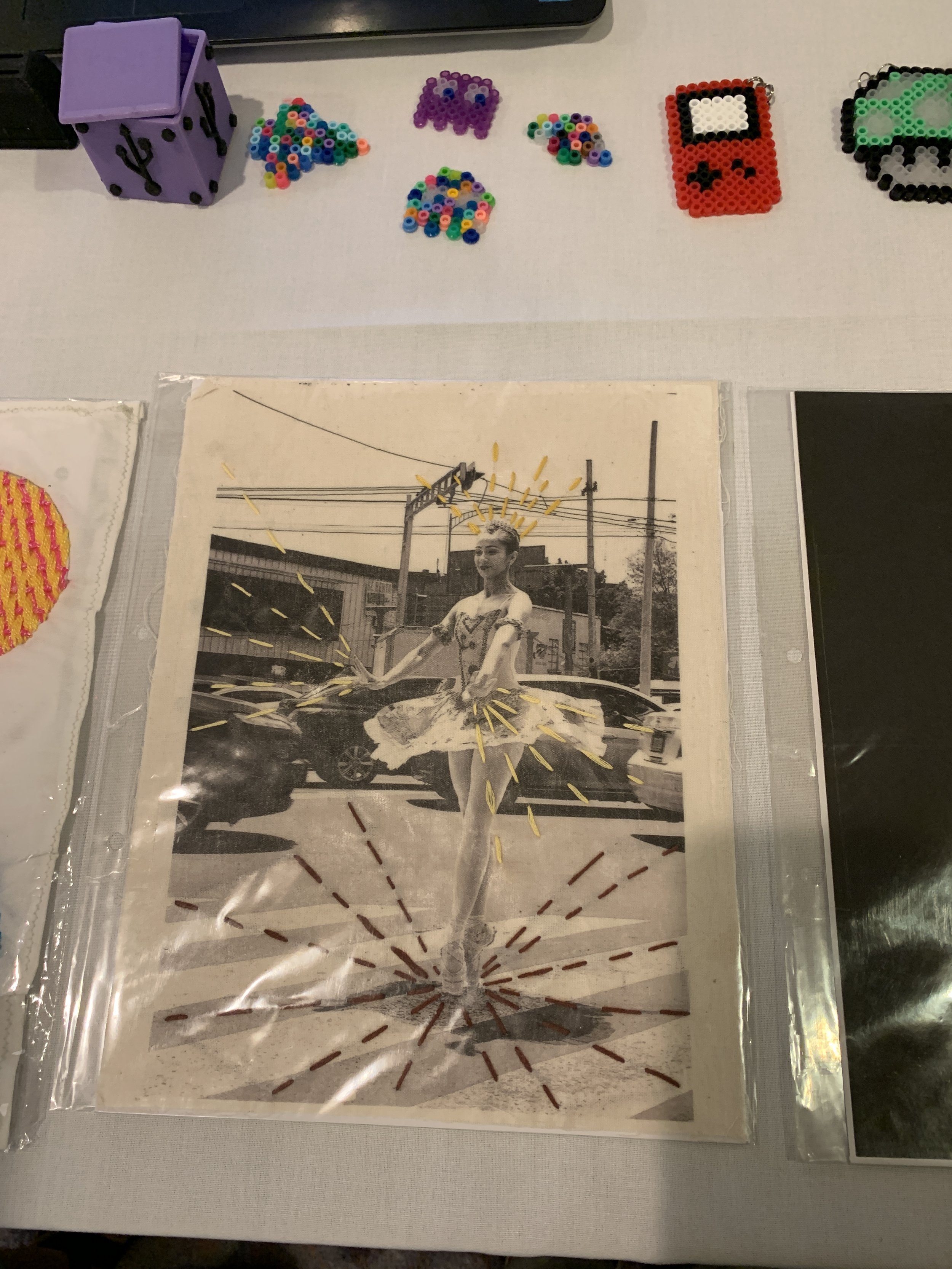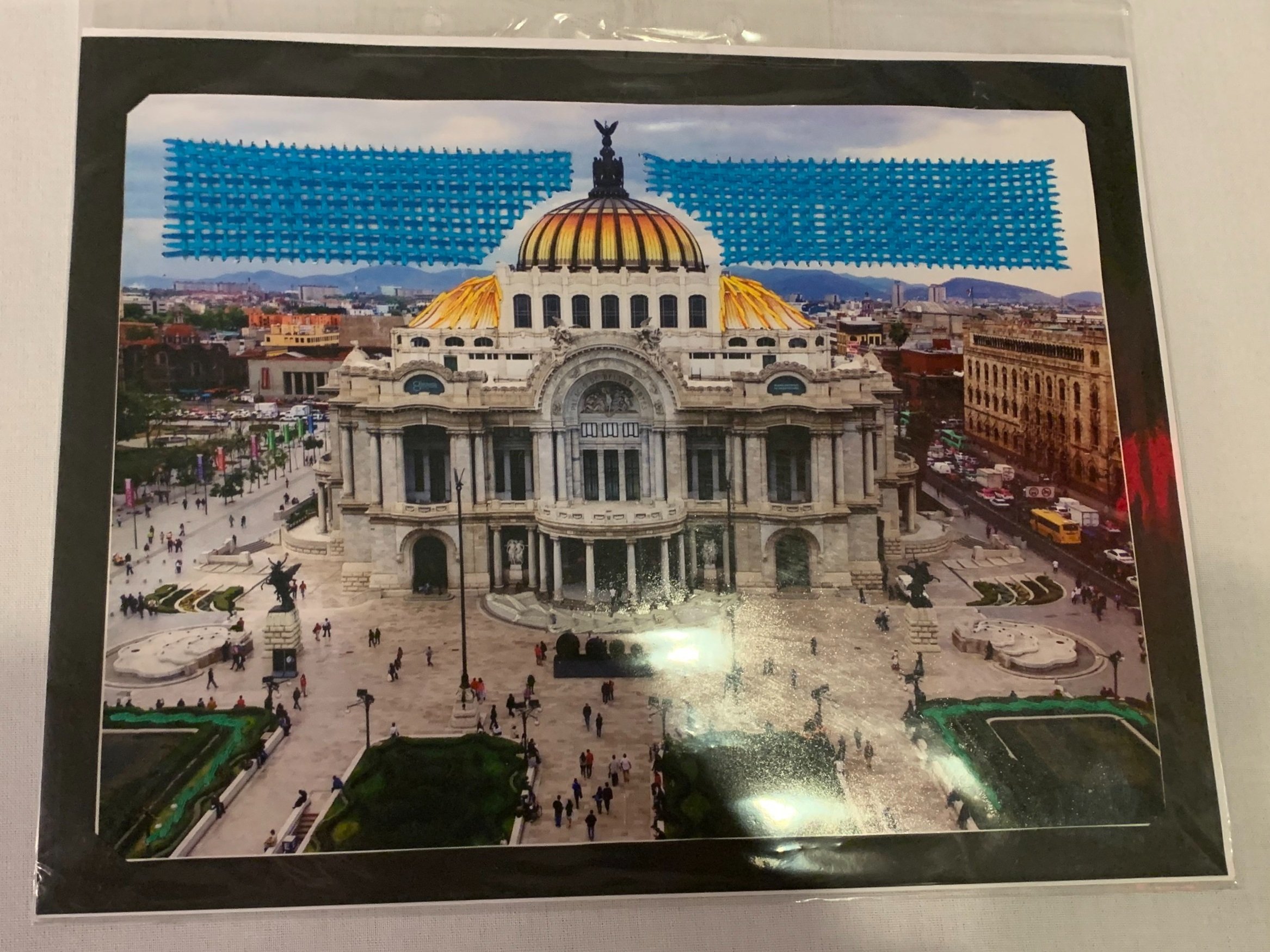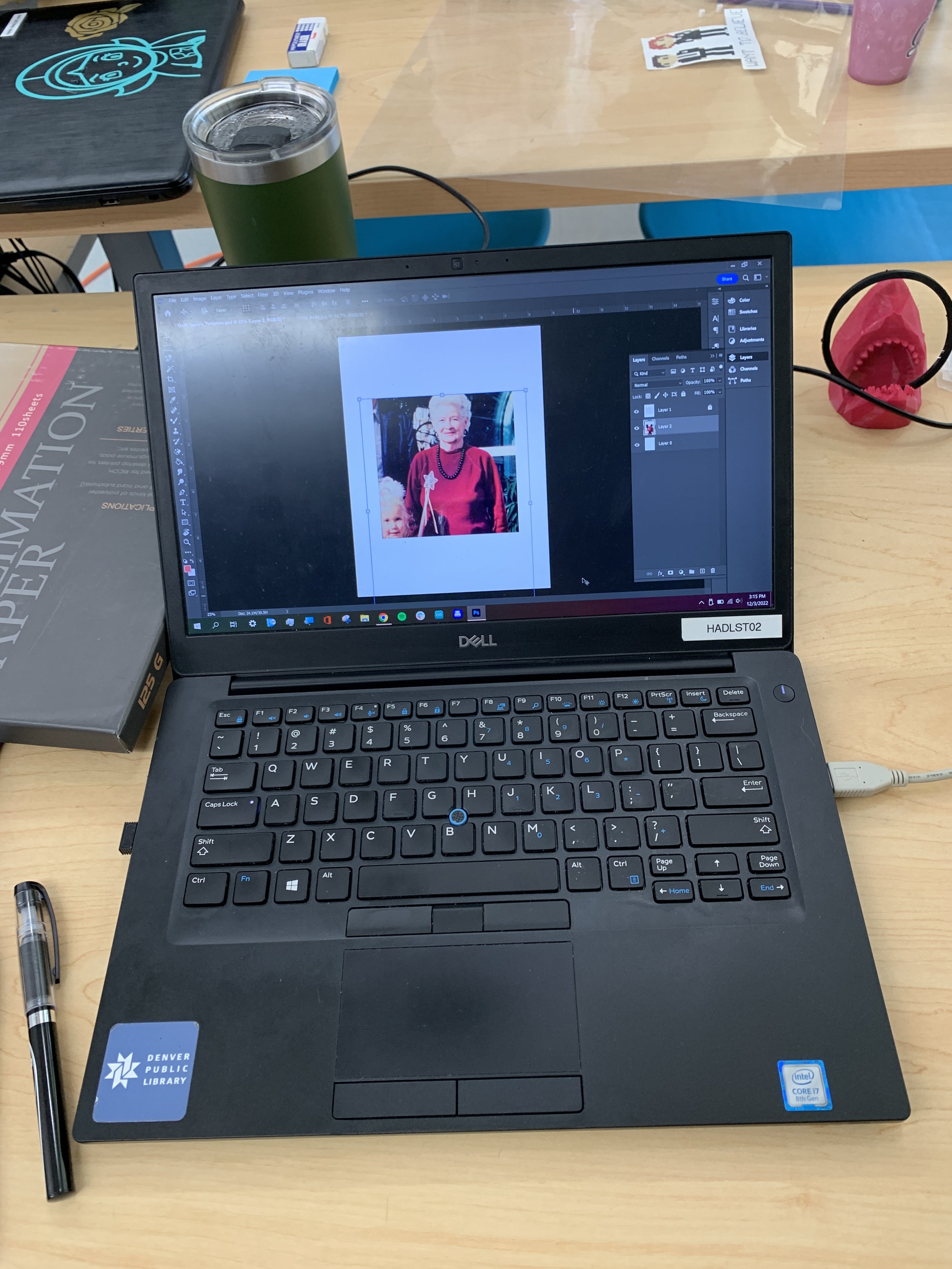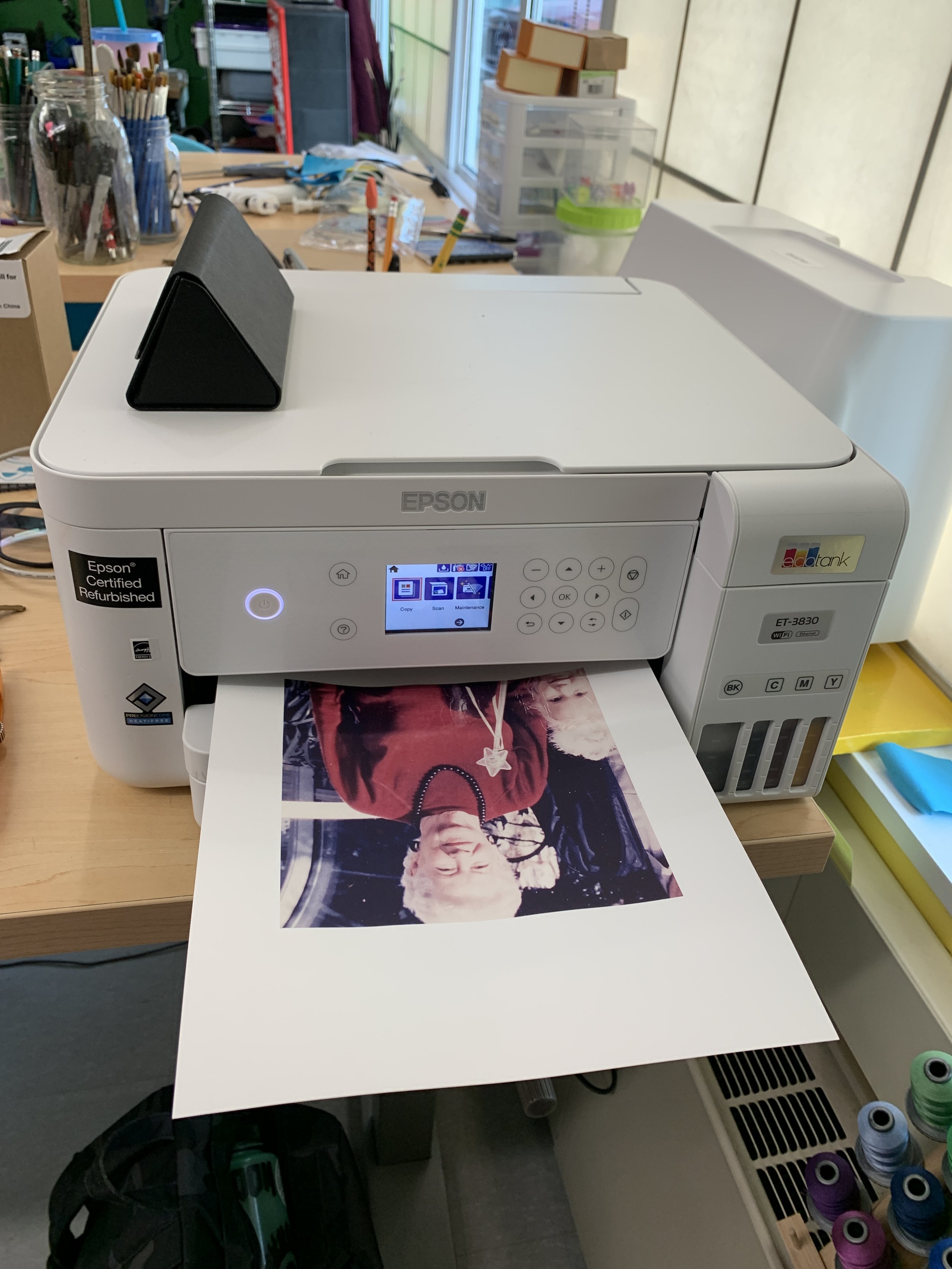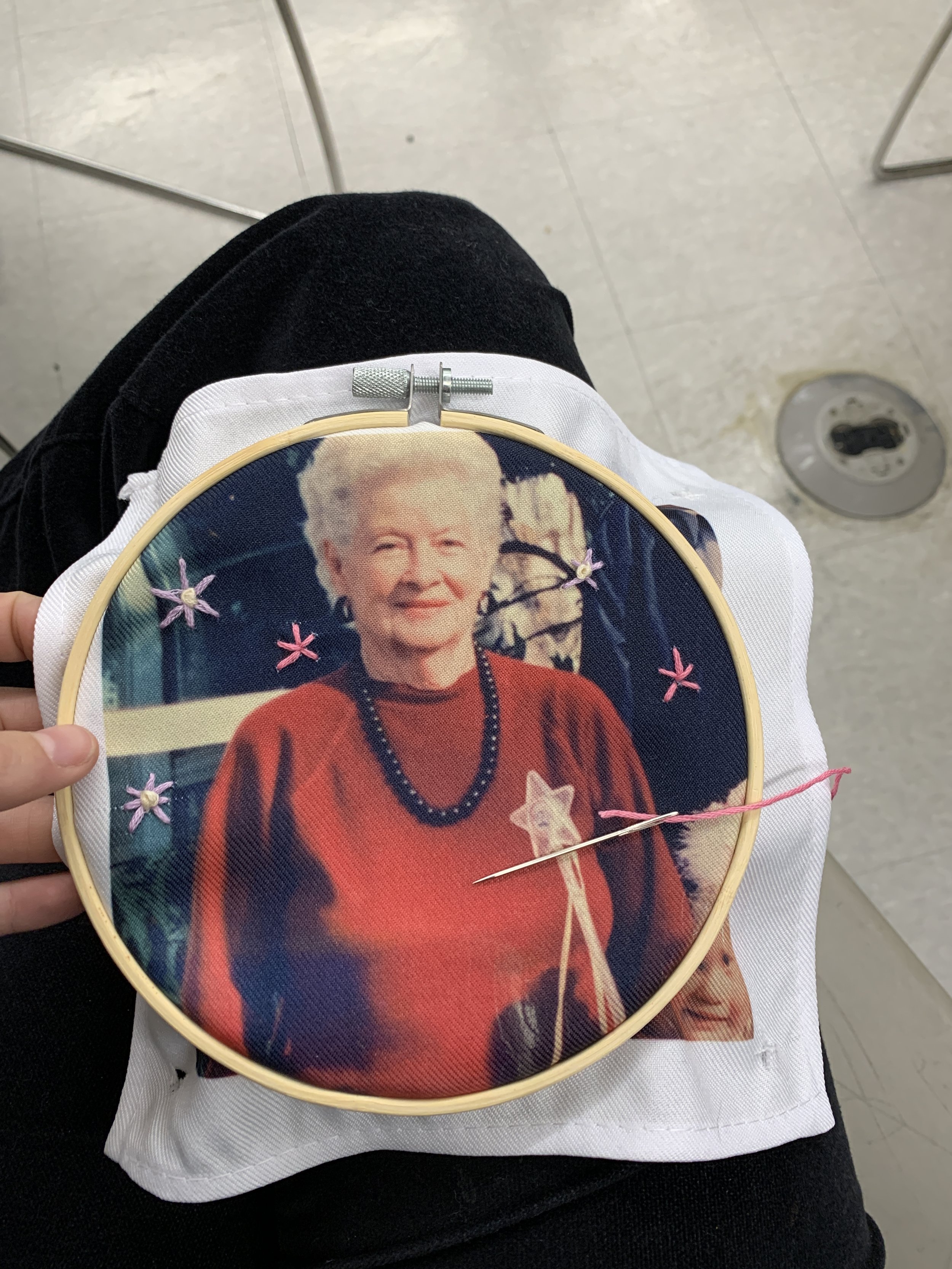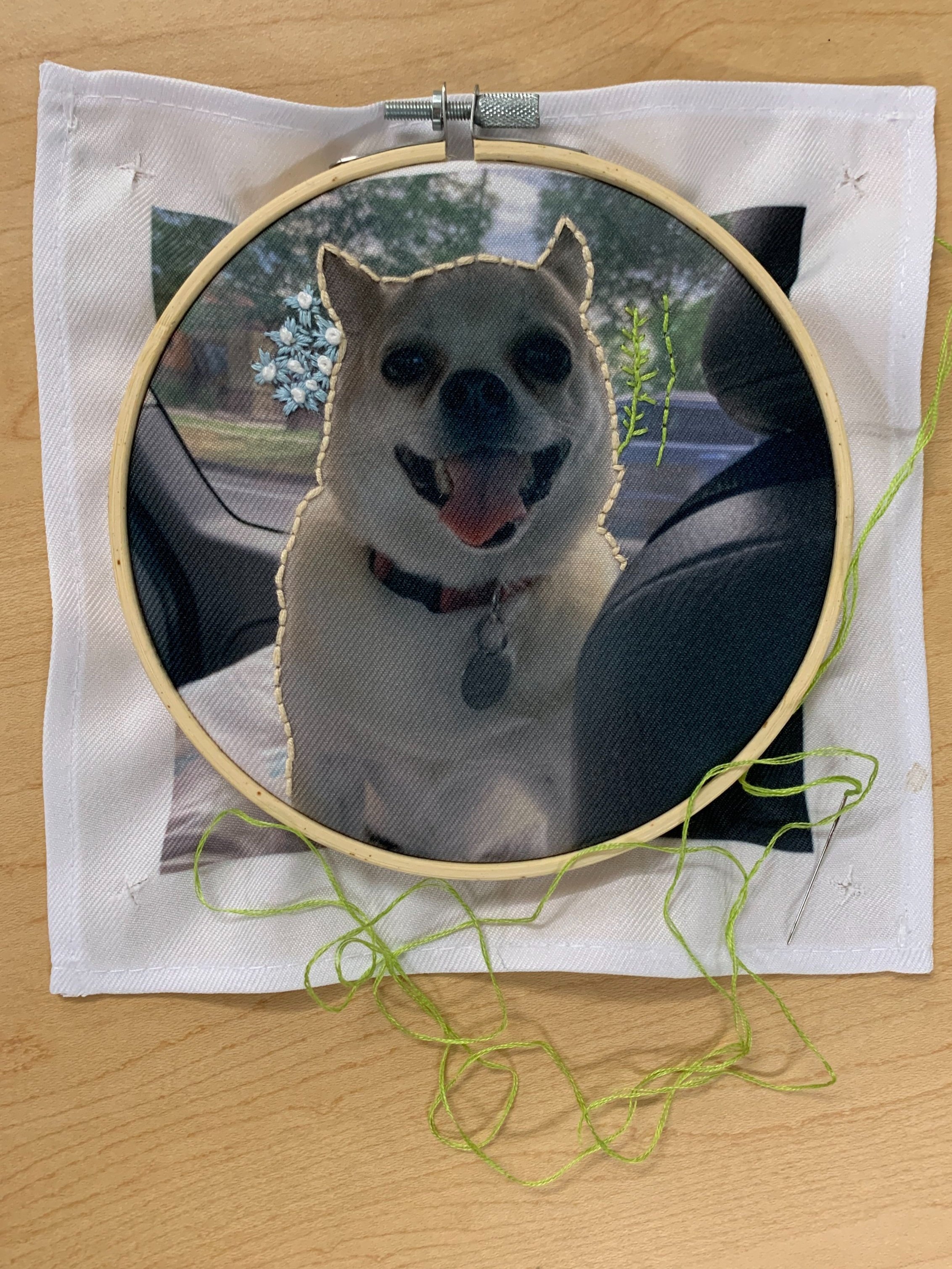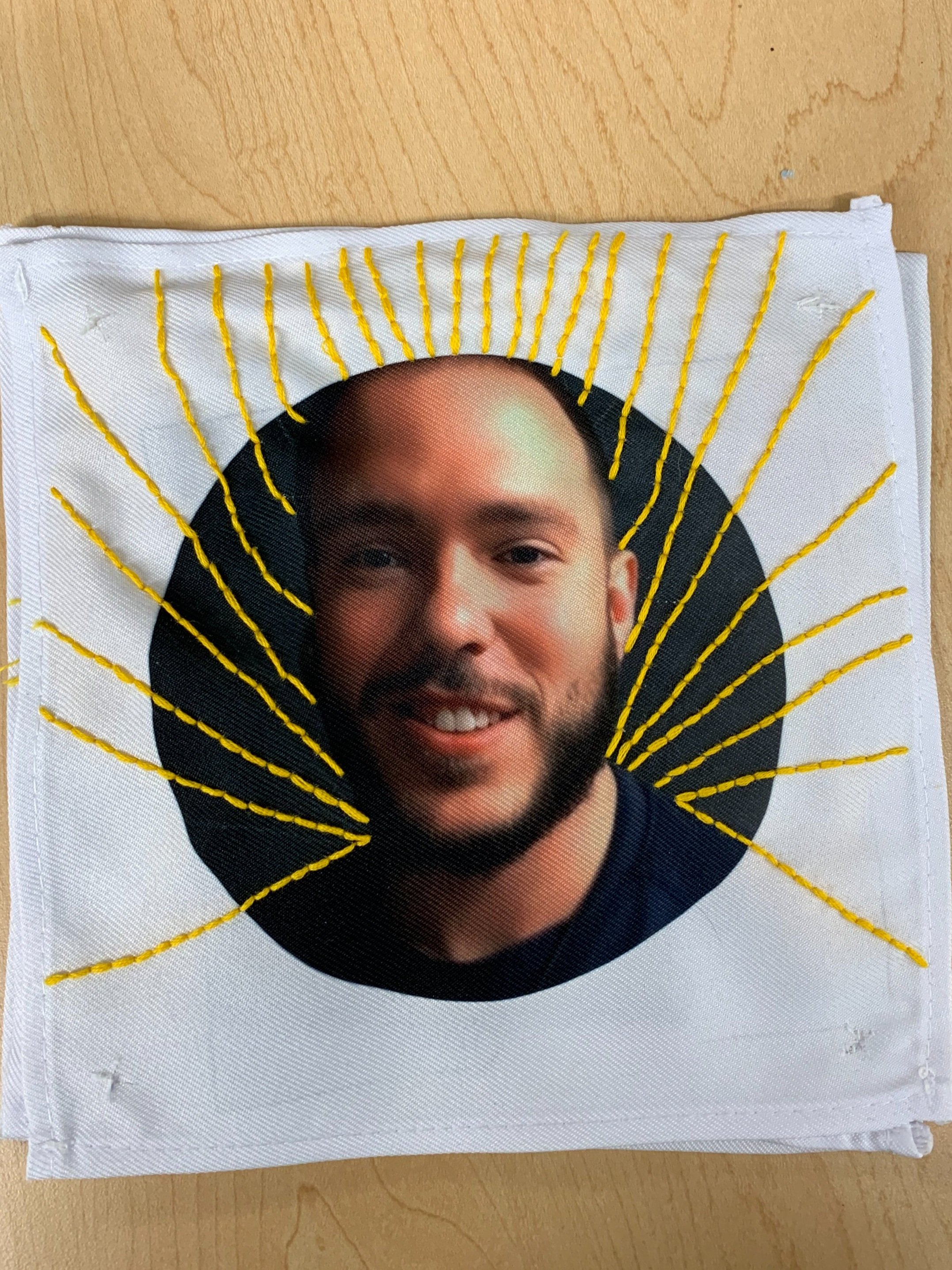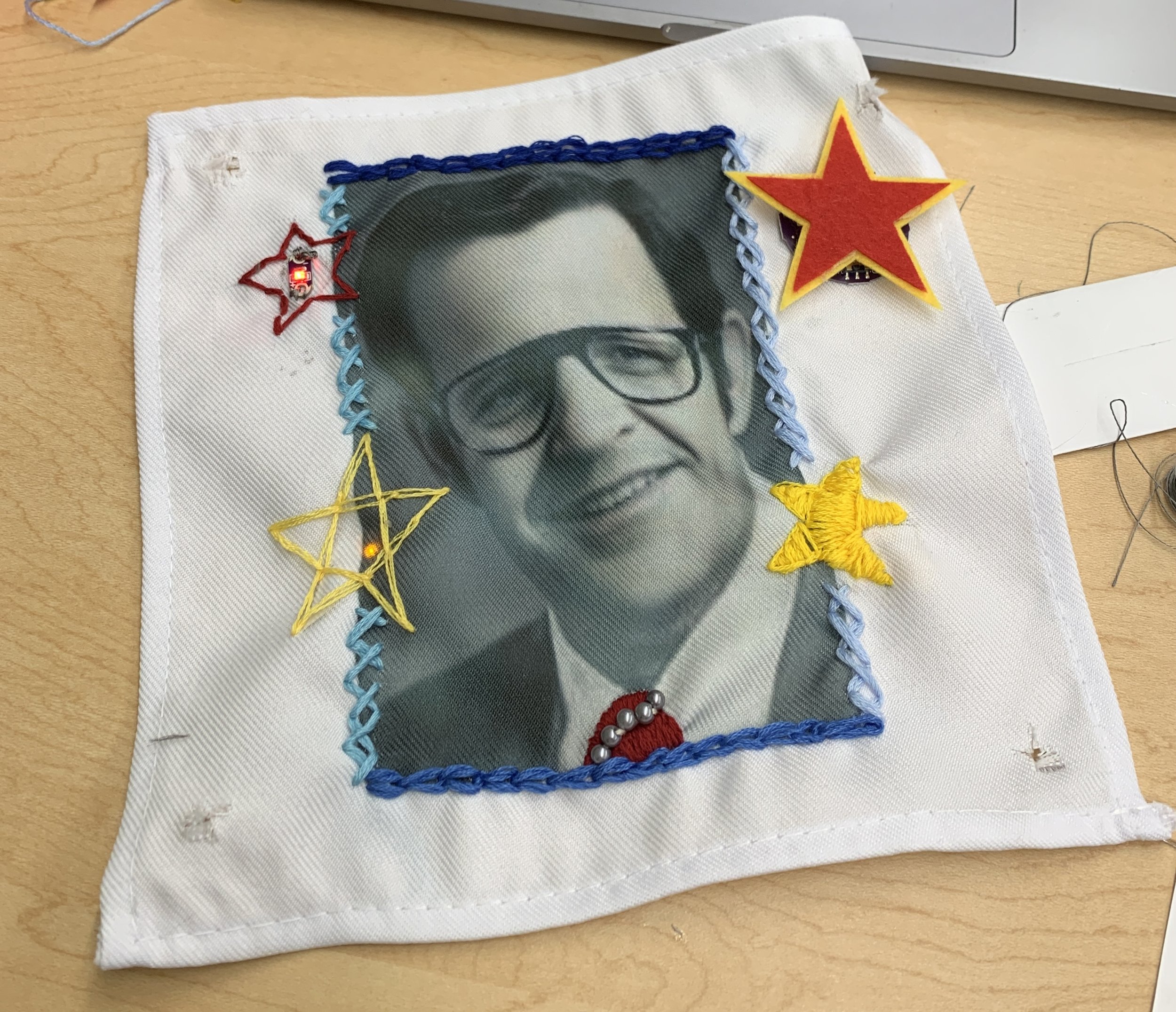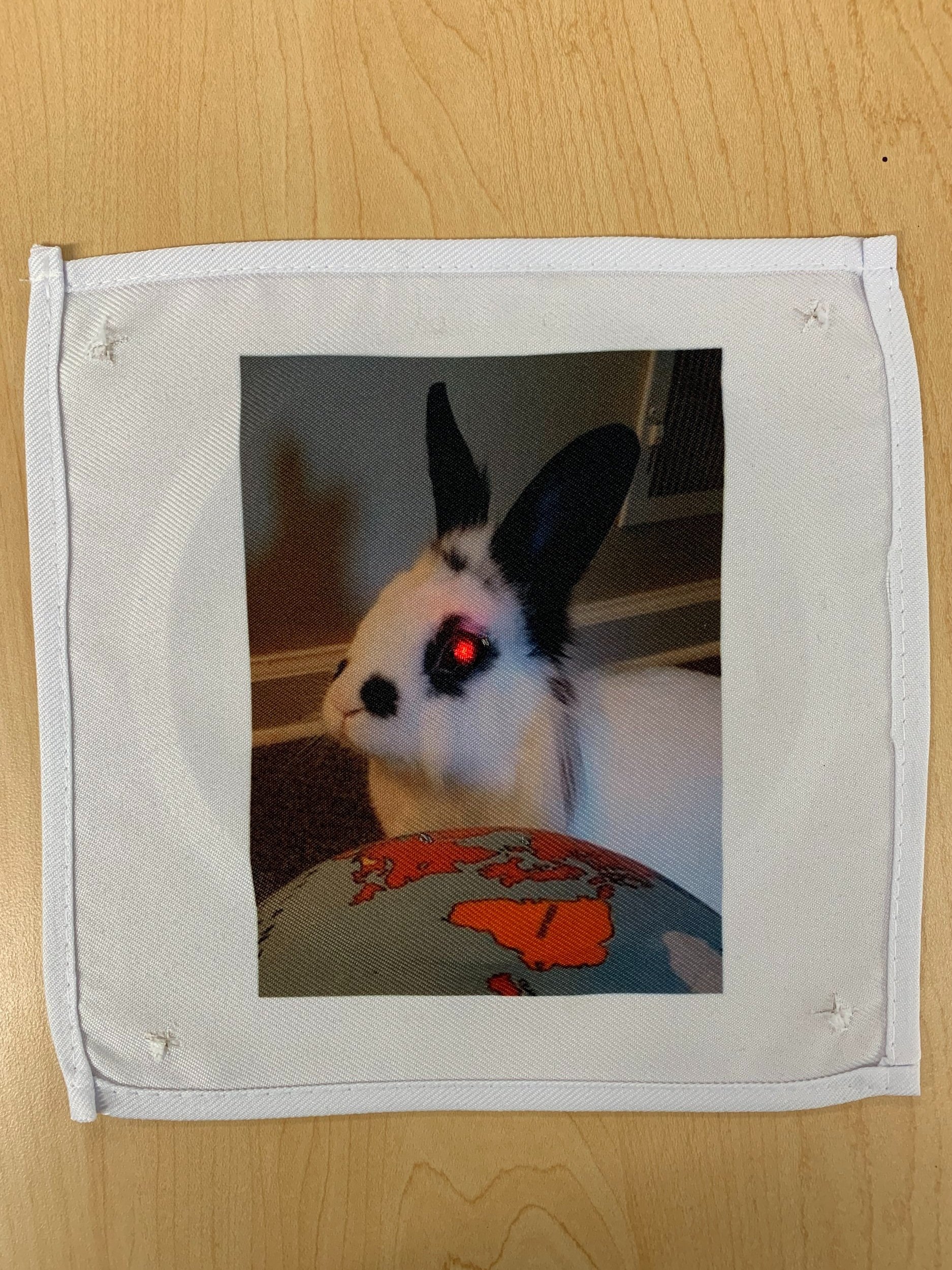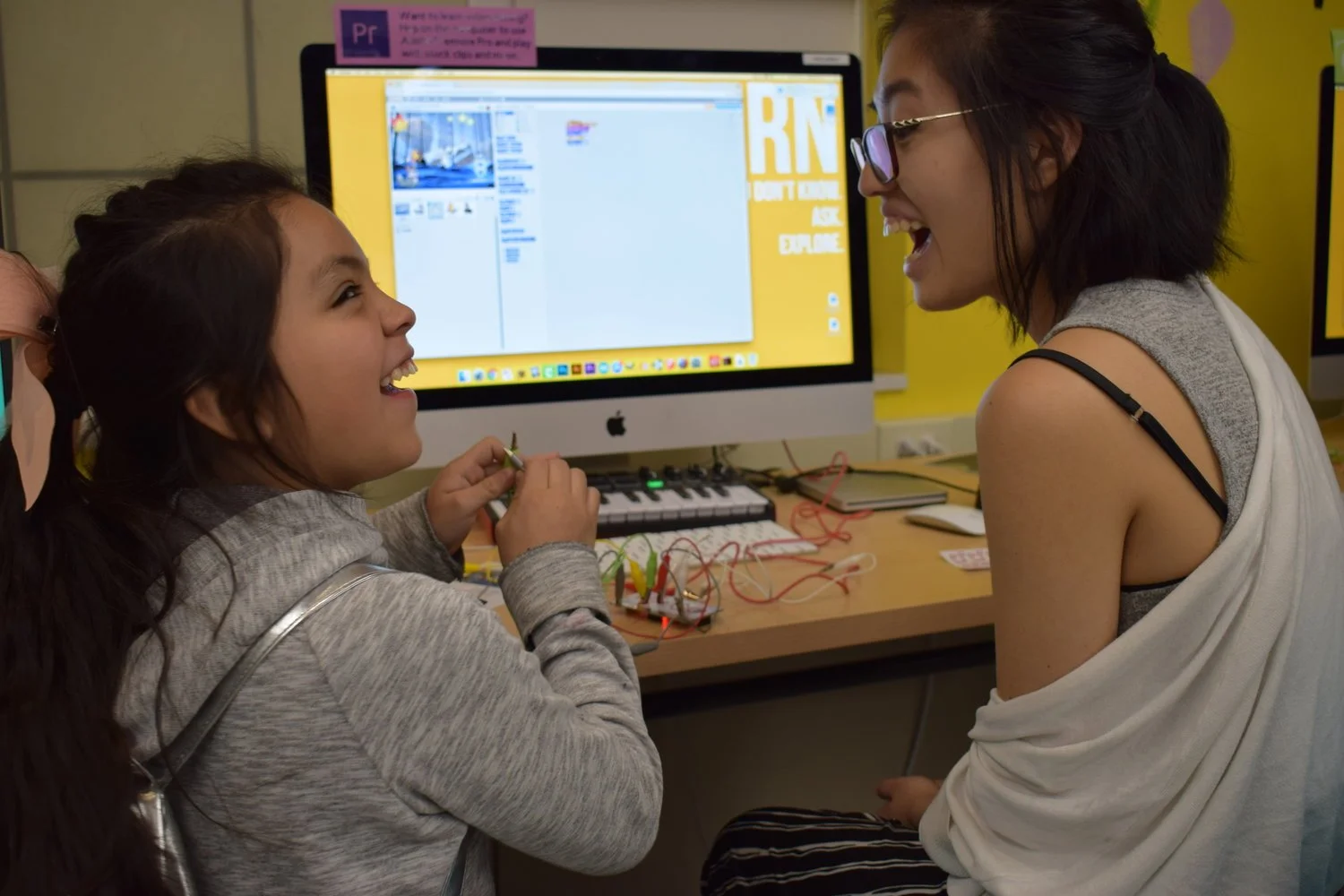Introduction
At the start of November 2023 we had the opportunity to invite our partners at the Denver Public Library (DPL) IdeaLabs and Denver-based Clubhouse Network to visit us at CU Boulder as a part of our Bits & Threads project with the Unstable Design Lab. Twelve educators drove in from Denver and participated in a day of brainstorming, weaving workshops, and more textile fun.
Our main goals for the field trip was to introduce our partners to different aspects of weaving, inspire ideas for future weaving projects, and hear their thoughts on how they saw weaving and computing being incorporated into their spaces. Prior to the meeting, our team had already been visiting our partners at their sites and bringing looms and other weaving materials for their participants to try.
How it went
We started the day with breakfast, introductions, and talking about our goals for the Bits & Threads project. We invited our DPL partners, many of whom have had looms in their spaces for the past several months, to share their own experiences and thoughts on weaving. For example, the Hampden ideaLAB has supported weaving on small tapestry looms. The Hadley ideaLAB has a loom in their space for a month and community members collectively created a cloth that they plan to display.
We then moved over to the BTU space for a tapestry weaving workshop led by Steven Frost where we learned how to weave on small laser cut looms designed by Steven.
After a lunch of empanadas, we got the chance to explore the Unstable Design Lab with Laura Devendorf and try out the various table and floor looms in the space. Each loom was already warped and had a suggested pattern for each educator to try out.
After our weaving explorations, we had a brief reflection on the activities and next steps on how we might continue to work together. We ended the day with a tour of the Schacht Spindle Company (maker of hand weaving and spinning equipment) factory.
Reflection
Not only was this a great chance for us to show our partners some of the work that goes on in our labs, it was also wonderful to hear their reflections and ideas throughout the day. Our partners shared a desire from community members to personalize items or recycle materials, and saw weaving as a way to address both through using a variety of materials and incorporating weaving into existing projects. Some saw it as a collaborative art form that could even change the dynamics of their space from creating consumables to creating a community display. They walked away with new ideas to try with their visitors, and we received lots of inspiration, suggestions, and ways to support them in this endeavor.
We hope our partners had as much fun as we did, and we are looking forward to all of the future bits & threads workshops.












